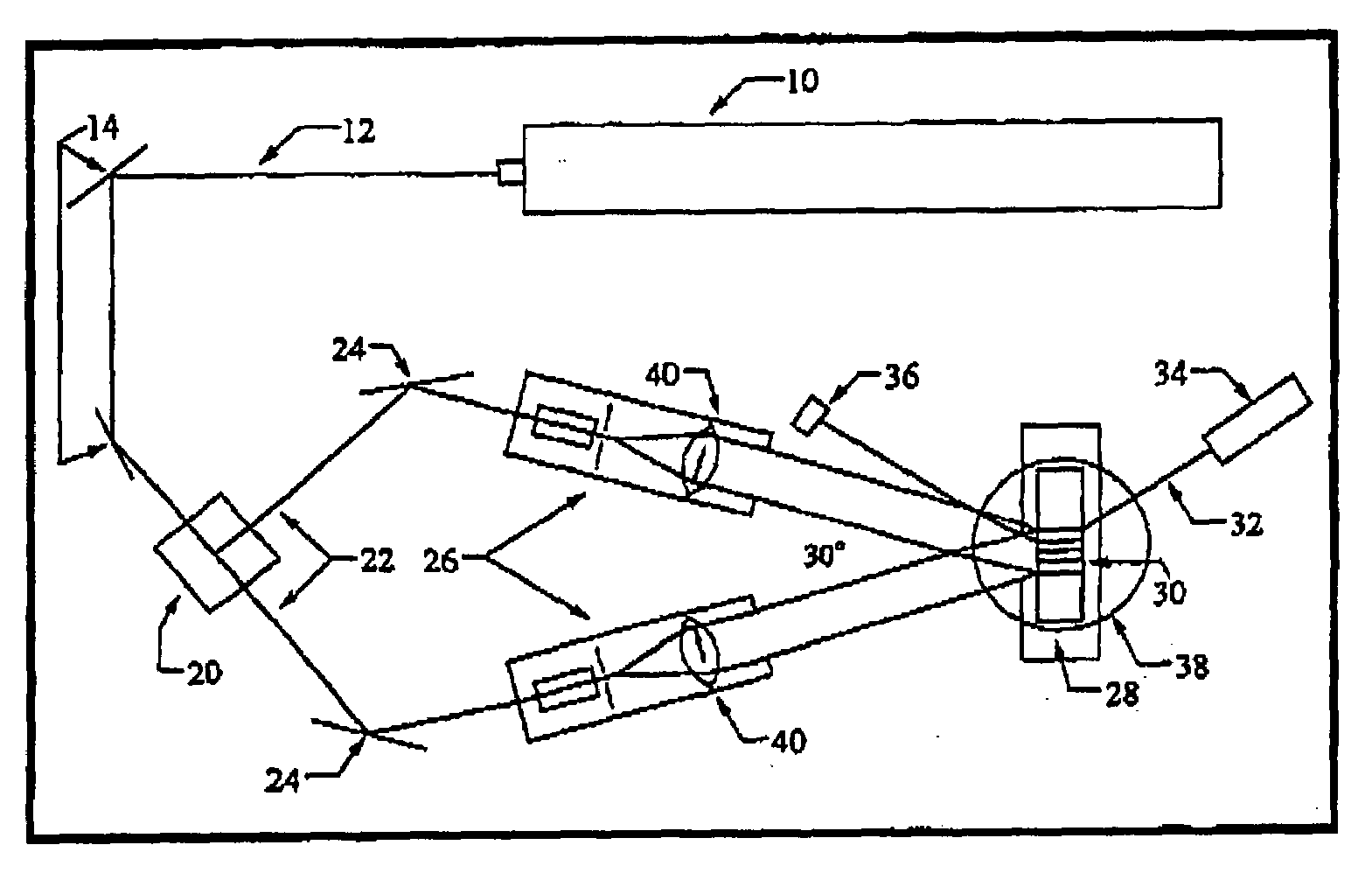Hologram recording material and hologram recording method
a recording method and hologram technology, applied in the field of hologram recording material and hologram recording method, can solve the problems of insufficient capacity of reduced optical diffraction or reflection efficiency, and inability to say that such existing two-dimensional optical recording media can get a recording capacity large, etc., to achieve high sensitivity, high diffraction efficiency, and high density
- Summary
- Abstract
- Description
- Claims
- Application Information
AI Technical Summary
Benefits of technology
Problems solved by technology
Method used
Image
Examples
example 1
(Hologram Recording Method via Color Developing Mode)
[0364]In a red lamp, the sensitizing dyes, the electron donating compounds, the acid generators, the dye precursors, the additives, and the binder PMMA-EA (a copolymer of poly(methyl methacrylate) and 5% ethyl acrylate and with a molecular weight of 101,000) were dissolved in a 2- to 4-fold mass weight of methylene chloride (in combination with acetone or acetonitrile if necessary), to prepare compositions for hologram recording materials, namely 1-1, 1-2, 2-1 through 2-5, 3-1 through 3-3 and compositions for comparative samples 1, 2 and 3. Herein, the term % expresses “% by mass” to the binder PMMA-EA, with no exception.
TABLE ISO-3ElectrondonatingSamplesSensitizing dyecompoundAcid generatorDye precursorAdditiveComparativeS-93 at 1.6%A-1 at 42%I-5 at 50%L-2 at 10%SO-3 at 8%Example 1Example 1-1S-93 at 1.6%A-1 at 42%PI-1 at 50%L-2 at 10%SO-3 at 8%Example 1-2SS-6 at 5.1%A-1 at 42%PI-1 at 50%L-2 at 10%SO-3 at 8%ComparativeS-93 at 1.6%...
example 2
(Hologram Recording Method via Discoloring Mode (with Sensitizing Dye+Discolorable Dye))
[0380]In a red lamp, the sensitizing dyes, the electron donating compounds, the acid generators, the dye precursors, the additives, and the binder PMMA-EA (a copolymer of polymethyl methacrylate and 5% ethyl acrylate and with a molecular weight of 101,000) as shown in Table 4 were dissolved in a 2- to 4-fold mass weight of methylene chloride (in combination with acetone or acetonitrile, if necessary), to prepare compositions for hologram recording materials, namely 5-1 through 5-5, 6-1 through 6-3 and compositions 5 and 6 for comparative samples. Herein, the “%” expresses “% by mass to the binder PMMA-EA”, with no exception.
TABLE 4ElectronAcid-SensitizingdonatingAciddiscolorableSamplesdyecompoundgeneratordyeComparativeS-93 at 1.6%A-1 at 42%I-5 at 50%G-37 atExample 513.6%Example 5-1S-93 at 1.6%A-1 at 42%PI-1 at 50%G-37 at13.6%Example 5-2SS-6 at 5.1%A-1 at 42%PI-1 at 50%G-37 at13.6%Example 5-3SS-6 ...
PUM
 Login to View More
Login to View More Abstract
Description
Claims
Application Information
 Login to View More
Login to View More - R&D
- Intellectual Property
- Life Sciences
- Materials
- Tech Scout
- Unparalleled Data Quality
- Higher Quality Content
- 60% Fewer Hallucinations
Browse by: Latest US Patents, China's latest patents, Technical Efficacy Thesaurus, Application Domain, Technology Topic, Popular Technical Reports.
© 2025 PatSnap. All rights reserved.Legal|Privacy policy|Modern Slavery Act Transparency Statement|Sitemap|About US| Contact US: help@patsnap.com



